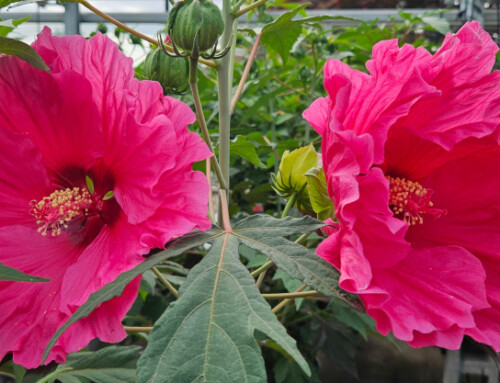Plants don’t lie: vegetable gardens are giving the last of their abundance and the maple trees are showing the first of fall reds in their uppermost branches. Regardless how firmly we try to grasp the fading rays of summer, the seasons march on and autumn is arriving. As you gear up for the new season, here are a few tips to make the most of early autumn around the yard.
First, late summer or early autumn is the perfect time to make an application of granular insecticide to control cranefly larvae and other lawn grubs in your lawn. Cranefly larvae typically hatch in late summer and early fall and will feed on a lawn’s root system over winter, leaving dead spots in your lawn come spring.
Additionally, cranefly larvae and other grubs that may be present in your soil are an excellent food source for moles, so if you find yourself frustrated by moles constantly tunneling in your lawn, your best first step is to reduce their food supply by applying a product like Bonide Eight insecticide, available at Vander Giessen Nursery. Doing so will not only prevent cranefly damage to your lawn over winter, it will make your yard less appealing for moles, encouraging them to look for greener pastures elsewhere.
Second, September is the perfect time to seed a lawn, whether for overseeding weak areas or for seeding a new lawn entirely. The reason I love this month the best for seeding is how quickly the new grass will sprout and get established. In April, when we can first seed lawns in our area, grass seed takes up to two weeks to sprout due to cool soil temperatures. In September, summer-warmed soil speeds up grass seed germination time to as little as seven days.
In addition to warm soil temperatures, September’s arrival typically brings cooler air temperatures and more moisture in the form of heavy morning dew and occasional rains, all of which reduces the amount of watering you’ll have to do to keep your lawn growing. If seeding part or all of your lawn is on the list for this fall, choose a high-quality, professional seed mix for the best results. Cheaper seed may not germinate evenly and may contain undesirable types of grass that don’t weather our wet western Washington winters. Rather, choose a reputable mix with a high percentage of fescue like the Vander Giessen Seed Mix for a durable, beautiful lawn for years to come.
Third, September and October are the ideal time for planting shrubs, trees, and perennials. As with the benefits of seeding grass in autumn, warm soil temperatures encourage rapid root development in plants as well. One thing many people don’t realize is that thanks to our relatively mild winters, many plants continue to grow roots well into late autumn and winter in the Pacific Northwest despite going dormant above-ground. So, if you want to enjoy healthy, well-established plants next summer and have the time to plant this fall, do it! Fall-planted plants get a whole season’s head start on those planted next spring and will reward you with increased vigor next summer compared to their spring-planted counterparts.
Finally, as you begin to change out your summer flowers for fall color, be sure to include plenty of winter pansies and their equally-hardy trailing cousins, Cool Wave pansies. Both regular winter pansies and Cool Waves will bloom heavily through fall and into early winter, then resume blooming as soon as the worst of winter has passed. Mixed with mums for that classic fall look, pansies are an excellent option for keeping your pots filled with color nearly the entire “off season.”
With showers beginning to fill in the forecasts, fall is upon us, and with it the excitement of a new season. Enjoy this month of transition and the opportunity to make the most of your lawn and garden!








Leave A Comment